A driving morning from Marmaris to Pamukkale. The road route through the mountains was so rugged that we could have been in British Columbia! A massive spend on the road through here, though some of the design has been shortcut with severe washouts in some of the completed roads.
Pamukkale has two big things going for it - first three great cliffs of white travertine which is the calcified rock left after the spring water washes over, and on top of the mountain the remains of Hierapolis, a Roman city built so the citizens could "take the waters"
.
Access to the cliffs is from the bottom, walking barefoot up a sloping terrace which is awash with the warm spring water. Some parts quite smooth, though easy to grip with bare feet, other parts quite rough with the pattern left by the evaporated waters - the best foot scrub imaginable!
The ruins of Hierapolis have all the features of a Roman city, including temples, theatre, forum areas etc.
Another discovery, which was nice being unpredicted, was to find the site where Phillip the apostle was martyred, up behind Hierapolis.
The campground location was very convenient, just near the park entrance. As with most other campgrounds, they were not totally ready for customers yet - plumbing still not sorted from last year, tree debris everywhere, pools empty, cafés still closed. They were in process of installing water slides next to the pool so we were treated to a typical continuous construction site debate into the evening, as they were obviously behind schedule. We could understand every bit of it even though it was in Turkish!
The White Cliffs of ... Pamukkale
Thursday, April 10, 2014
 Pamukkale, Denizli Province, Turkey
Pamukkale, Denizli Province, Turkey
Other Entries
-
23Away we go!
Mar 0932 days prior Oriental Lakes, Francephoto_camera6videocam 0comment 0
Oriental Lakes, Francephoto_camera6videocam 0comment 0 -
24First view of the Mediterranean.
Mar 1130 days prior Carro, Francephoto_camera9videocam 0comment 1
Carro, Francephoto_camera9videocam 0comment 1 -
25Mediterranean Coast
Mar 1328 days prior Fréjus, Francephoto_camera13videocam 0comment 0
Fréjus, Francephoto_camera13videocam 0comment 0 -
26Monte Carlo drive through
Mar 1922 days prior Florence, Italyphoto_camera21videocam 0comment 2
Florence, Italyphoto_camera21videocam 0comment 2 -
27En route to Rome
Mar 2120 days prior Rome, Italyphoto_camera3videocam 0comment 1
Rome, Italyphoto_camera3videocam 0comment 1 -
28Rome and the Rome Marathon!
Mar 2318 days prior Rome, Italyphoto_camera8videocam 0comment 0
Rome, Italyphoto_camera8videocam 0comment 0 -
29Pompeii
Mar 2516 days prior Pompei, Italyphoto_camera16videocam 0comment 3
Pompei, Italyphoto_camera16videocam 0comment 3 -
30Camping
Mar 2615 days prior Monopoli, Italyphoto_camera3videocam 0comment 1
Monopoli, Italyphoto_camera3videocam 0comment 1 -
31Are we having fun yet??
Mar 2714 days prior Igoumenitsa, Greecephoto_camera4videocam 0comment 2
Igoumenitsa, Greecephoto_camera4videocam 0comment 2 -
32Welcome to Greece-motorway closed!!
Mar 2813 days prior Kavála, Greecephoto_camera4videocam 0comment 0
Kavála, Greecephoto_camera4videocam 0comment 0 -
33Grateful guests
Mar 2912 days prior Gallipoli, Turkeyphoto_camera4videocam 0comment 0
Gallipoli, Turkeyphoto_camera4videocam 0comment 0 -
34Gallipoli
Mar 3110 days prior Istanbul, Turkeyphoto_camera8videocam 0comment 1
Istanbul, Turkeyphoto_camera8videocam 0comment 1 -
35Camping in Istanbul
Apr 028 days prior Istanbul, Turkeyphoto_camera10videocam 0comment 2
Istanbul, Turkeyphoto_camera10videocam 0comment 2 -
36Istanbul day 2 -we've been here before!
Apr 046 days prior Istanbul, Turkeyphoto_camera15videocam 0comment 1
Istanbul, Turkeyphoto_camera15videocam 0comment 1 -
37Camping with the locals
Apr 064 days prior Tevfikiye, Turkeyphoto_camera13videocam 0comment 5
Tevfikiye, Turkeyphoto_camera13videocam 0comment 5 -
38Flexibility
Apr 082 days prior Marmaris, Turkeyphoto_camera9videocam 0comment 3
Marmaris, Turkeyphoto_camera9videocam 0comment 3 -
39On foot
Apr 091 day prior Rhodes, Greecephoto_camera12videocam 0comment 1
Rhodes, Greecephoto_camera12videocam 0comment 1 -
40The White Cliffs of ... Pamukkale
Apr 10 Pamukkale, Turkeyphoto_camera9videocam 0comment 2
Pamukkale, Turkeyphoto_camera9videocam 0comment 2 -
41Two Talkative Turks
Apr 111 day later Selcuk, Turkeyphoto_camera0videocam 0comment 1
Selcuk, Turkeyphoto_camera0videocam 0comment 1 -
42Aphrodisias 1, Antioch 0
Apr 111 day later Selcuk, Turkeyphoto_camera7videocam 0comment 0
Selcuk, Turkeyphoto_camera7videocam 0comment 0 -
43Ephesus crowds
Apr 122 days later Selçuk, Turkeyphoto_camera10videocam 0comment 0
Selçuk, Turkeyphoto_camera10videocam 0comment 0 -
44Goodbye Asia
Apr 133 days later Kavala, Greecephoto_camera1videocam 0comment 0
Kavala, Greecephoto_camera1videocam 0comment 0 -
45Kavala
Apr 144 days later Kavala, Greecephoto_camera3videocam 0comment 0
Kavala, Greecephoto_camera3videocam 0comment 0 -
46Our first Greek Island!
Apr 155 days later East Macedonia and Thrace, Greecephoto_camera9videocam 0comment 0
East Macedonia and Thrace, Greecephoto_camera9videocam 0comment 0 -
47Lazy day
Apr 166 days later Limenaria, Greecephoto_camera1videocam 0comment 0
Limenaria, Greecephoto_camera1videocam 0comment 0 -
48Travel day to Sithonian Peninsula
Apr 177 days later Lagonisi, Greecephoto_camera3videocam 0comment 0
Lagonisi, Greecephoto_camera3videocam 0comment 0 -
49Noises in the night!!
Apr 188 days later Plaka, Greecephoto_camera8videocam 0comment 0
Plaka, Greecephoto_camera8videocam 0comment 0 -
50Ouzo for morning tea!
Apr 199 days later Kastraki, Greecephoto_camera10videocam 0comment 0
Kastraki, Greecephoto_camera10videocam 0comment 0 -
51Meteora
Apr 2010 days later Thermopiles, Greecephoto_camera10videocam 0comment 0
Thermopiles, Greecephoto_camera10videocam 0comment 0 -
52Disasters come in 3s!!!!!
Apr 2111 days later Athens, Greecephoto_camera5videocam 0comment 0
Athens, Greecephoto_camera5videocam 0comment 0 -
53Athens- the day got better and we are corrected!!
Apr 2212 days later Athens, Greecephoto_camera6videocam 0comment 0
Athens, Greecephoto_camera6videocam 0comment 0 -
54Athens day 2 - slow start but successful.
Apr 2313 days later Athens, Greecephoto_camera3videocam 0comment 0
Athens, Greecephoto_camera3videocam 0comment 0 -
55More ruins!!!
Apr 2414 days later Nafplion, Greecephoto_camera13videocam 0comment 0
Nafplion, Greecephoto_camera13videocam 0comment 0 -
56999 steps!
Apr 2515 days later Peloponnese, Greecephoto_camera11videocam 0comment 0
Peloponnese, Greecephoto_camera11videocam 0comment 0 -
57Mystras fortress
Apr 2616 days later Methoni, Greecephoto_camera15videocam 0comment 1
Methoni, Greecephoto_camera15videocam 0comment 1 -
58Methoni fortress and then Paris!!!
Apr 2717 days later Ancient Olympia, Greecephoto_camera8videocam 0comment 0
Ancient Olympia, Greecephoto_camera8videocam 0comment 0
Comments
2025-05-22
Comment code: Ask author if the code is blank

 Pamukkale, Denizli Province, Turkey
Pamukkale, Denizli Province, Turkey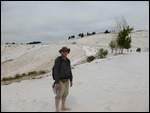





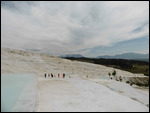
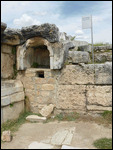

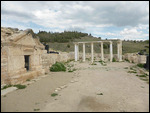
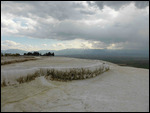
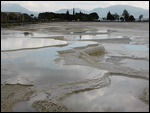

wanderoos
2014-04-19
Hey John, are the cliffs travertine? I was surprised to read you walked barefoot. When we did the ones in China, they were so slippery, first I went down and cracked my elbow (good save for the camera though!), and then Jon followed....
boomermaxwell
2014-04-19
Rob,
The clean new surface was like sand-paper, it was only where there were older areas covered with very fine algae that it became so so slippery